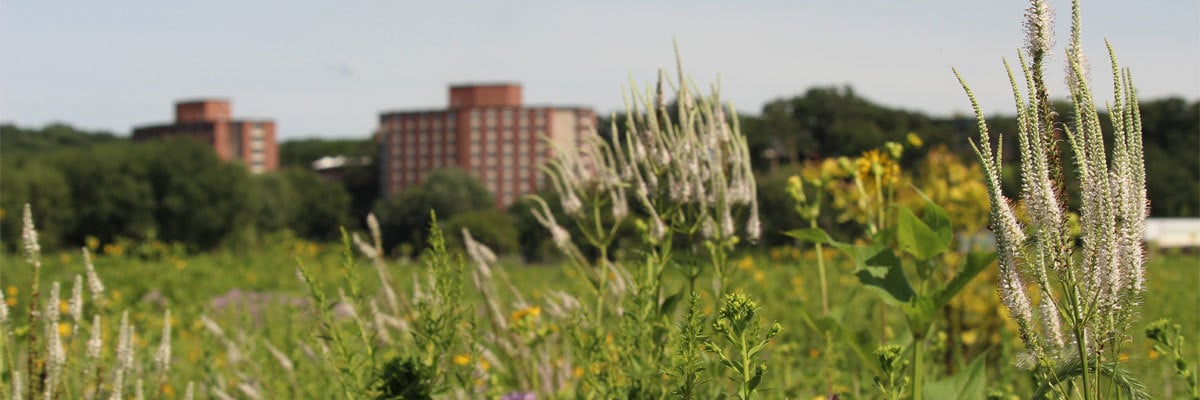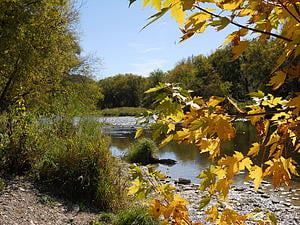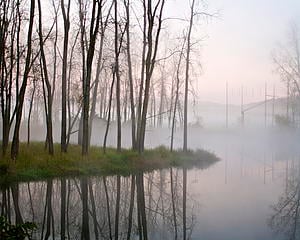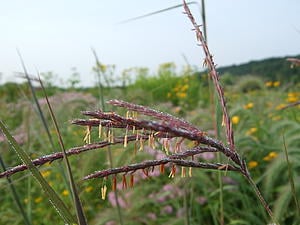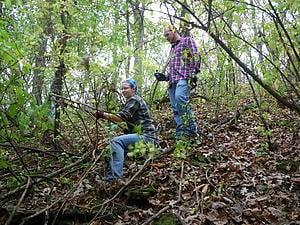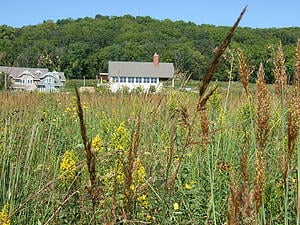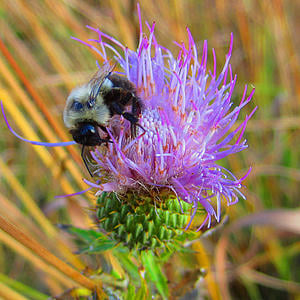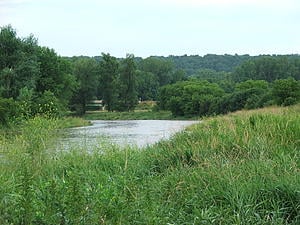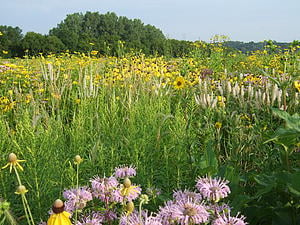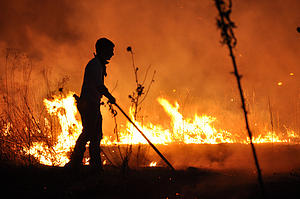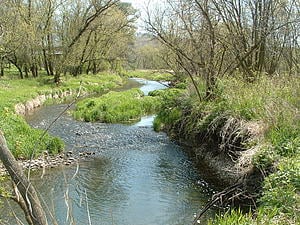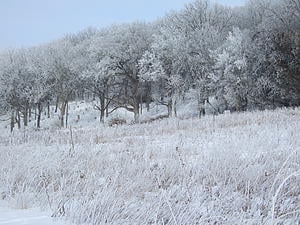An Iowa College in the Liberal Arts Tradition
Biology
Luther College Natural Areas
Luther's Unique Location
Northeastern Iowa, along the Upper Iowa River, is a natural draw for biologists. Known as the Driftless Area, this part of the Upper Midwest escaped the most recent glaciation. It features rugged topography with a great variety of natural habitats.
The areas that surround campus are a vital component of students’ education in biology. Because of their easy accessibility, many of the natural areas are used by students each year for field “labs.” The diversity of habitats and ongoing restoration projects provide many opportunities for student research projects.
Hiking Trails
Students and the public have access to a five-mile trail that connects each of the areas described below, as featured in this color map. A black and white version is also available with detailed descriptions.
Woodlands
Spilde Woods and Hickory Ridge Woods are mature hardwood forests with several species of oak, hickories, walnuts, and maples. They are used by students in biology classes to study forest ecology. In the early spring, blue bells, Hepatica, and spring beauty are common on the forest floor.
Roslien Woodlands is a former pasture that was planted to hardwoods and conifers to restore the soils. The conifers are being removed as the hardwoods grow larger.
The Weigle-Roslien Woodland is a 10-acre tract of old sugar maple-dominated forest donated to the college by Luther emeriti professors James Weigle and David Roslien. Located about 10 miles north of campus, this is a rare remnant of Big Woods vegetation on rich soils. Students studying ecology and botany have participated in establishing permanent research plots to study long-term changes in vegetation at this site.
River and Floodplain
The Upper Iowa River runs through the Luther College property. The Invertebrate Zoology course monitors benthic macroinvertebrates within the river.
Hoslett Study Area is located along the Upper Iowa River and has an interesting mix of plant species adapted to rich floodplain soils. Funds from the Emergency Watershed Protection program allowed Luther College to restore additional land along the Upper Iowa River Floodplain. In 2011, native trees and prairie species were planted. Students will be involved in monitoring the progress of the ecological restoration of these areas for years to come.
Lindeman Pond is one of several ponds on campus used by students in biology courses. Named after Raymond Lindeman, who developed the energy flow model for ecosystems based on his research at Cedar Creek bog in Minnesota. The pond has painted and snapping turtles, spring peepers, and bluegill, as well as microscopic organisms studied by microbiology students.
Prairies
Anderson Prairie is a 24.7-acre planted tallgrass prairie that prior to 1988 was used for row-crop agriculture by the college farm. Planted in 1988 and expanded in 1998, the goal was to reduce soil erosion, increase biodiversity, and provide increased educational and research opportunities for our students.
Gateway Prairie is a 39.3-acre prairie and oak savanna established in 2005 along the east side of Highway US-52 immediately adjacent to the Upper Iowa River, with the goal of helping reduce soil erosion during flood events and providing recreational and aesthetic benefits to the Decorah community. Formerly a highly erodable agricultural field, the prairie was planted with over 70 species of native plants. Burn breaks within the prairie are used by the cross country team as part of their race courses.
Jewell Prairie
Aikman Prairie
West-River Prairie
Students in several biology and environmental studies courses use these sites to learn about prairie ecology.
Remote Natural Areas
Lionberger Environmental Preserve is a 176-acre site that includes an upland oak-hickory forest, Ten Mile Creek, a spring-fed pond, a floodplain forest, several open grassland areas, and limestone bluff outcrops. Located 5 miles west of campus at 2413 Pole Line Road. Students in the Botany, Ecology, Entomology and geology courses regularly use this area for field studies.
Freeport Marsh is an unusually large spring-fed marsh with several plant species that are rare in Iowa; including skunk cabbage, alder, and sweet flag.
Connect with Biology
Visit on LinkedInLand Stewardship Plan
This plan guides decisions affecting the 1000 acres of the Luther College campus where biological education and biodiversity are the primary goals.
Download the Land Stewardship plan.
Natural Assets Article
Read about the natural areas located around Luther campus and Decorah in the Natural Assets article from the Luther Alumni Magazine.
Learn about land and recreation throughout Decorah and Luther College.
A prescribed prairie burn in Gateway Prairie on the Luther College campus.

